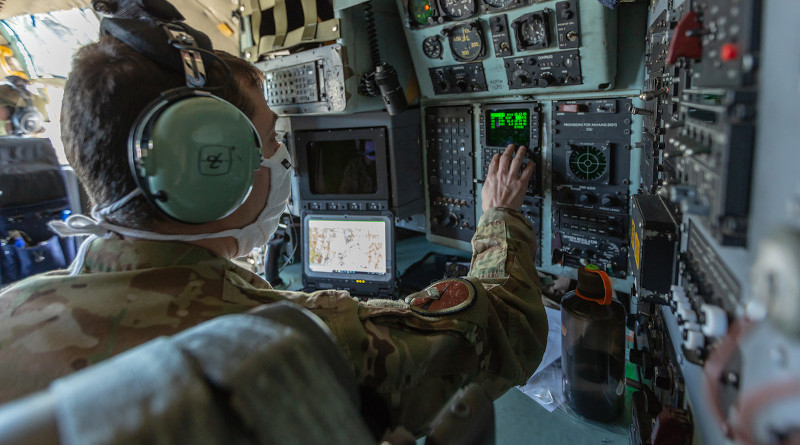Pentagon Adopts ‘Zero Trust’ Approach To Buying Microelectronics
By DoD News
By C. Todd Lopez
Microelectronics are in nearly everything, including the complex weapons systems the Defense Department buys, such as the F-35 joint strike fighter, the Pentagon’s director of defense research and engineering for modernization said.
“It is so ubiquitous and because it is … so fundamental to everything we do,” Mark J. Lewis said via video conference today as part of a forum sponsored by the Armed Forces Communications and Electronics Association.
Because of the importance of microelectronics, he said, the department is shifting the way it goes about buying microelectronics and ensuring they are secure to use.
“We want the Department of Defense to have access to state-of-the-art capabilities, which we do not have today,” he said. That’s because the department is not buying on the commercial curve, he explained.
In the mid-1990s, DOD adopted a “trusted foundry” model for procuring microelectronics, Lewis said.
“The idea [was] that in order to deliver parts that we could trust, we would enable foundries that would manufacture our microelectronics where we had control over every step of the process — or so we thought,” he said. “That model, we think, has failed.”
The department isn’t a large purchaser of microelectronics, Lewis said, so companies that adhered to the department’s “trusted foundry” model were unable to make a business case for following it.
“As a result, they haven’t been investing,” he said. “The chips that we buy, the microelectronic components that we buy from those trusted foundries, are in some cases two generations behind what’s available on commercial state-of-the-art.”
Also, he said, the “trusted foundry” model does pose risk — from the inside.
“We’ve seen a number of examples where the biggest threats that we face often are the insider threat. It’s the people inside the fence line, behind the guards, who we think we’ve cleared,” he said. “They’re the ones that pose the biggest threats to us.”
Now, he said, the department looks instead to a “zero trust” approach to purchasing microelectronics. That assumes that nothing the department buys is safe, and that everything must be validated before it can be used.
“You depend on data, you depend on validation and verification, you depend on standards that will make sure that what you have has no surprises, doesn’t have back doors that are going to injure you or damage you, and doesn’t act in a malicious way,” he said. “We’re actually extremely comfortable now — we believe that the technologies already exist for us to be able to do that.”
By using “zero trust,” he said, the department will be able to gain access to the most modern technology.
“Our goal is to allow the Department of Defense to purchase on the commercial curves, from state-of-the-art,” Lewis said. “That will put us on … par with our strategic competitors.”
Lewis laid out 11 department technology priorities. Those include microelectronics; autonomy; cyber; 5G communications; fully-networked command and control communications; space; hypersonics; quantum science; biotechnology; artificial intelligence; and directed energy. Of those, he said, microelectronics are the top priority.
On 5G, he said, that communications technology is “an absolutely essential, high-priority monetization element for us.”
“5G brings data rates, it brings low-latency, it brings a volume of data that will be far greater than what we operate with today,” he said. “The implications for the Department of Defense, we think, are quite profound.”
The department wants for the U.S. to be setting international standards for 5G and also wants to ensure DOD’s needs and requirements are driving the direction in which the technology moves, he said.
The coronavirus pandemic has highlighted the importance of biotechnology, he said. But for the department, dealing with and defeating pandemics is only part of that technology space, he added.
“We view biotechnology also, as using synthetic biological processes and using biotechnology to enable and enhance new manufacturing capabilities,” he said.
He cited microorganisms that can produce materials with properties similar to concrete as an example.
Some of the work from organizations such as the Defense Advanced Research Projects Agency can actually grow a runway, Lewis said. “You can sprinkle these organisms and have them produce runway material, instead of the old fashioned way,” he explained. Other microorganisms can concentrate rare earth metals, providing a new supply chain for those materials, Lewis said.

